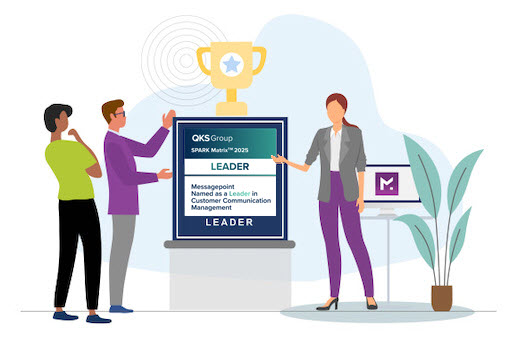
Responsiveness to each customer’s individual needs has always been the key to a satisfactory customer experience (CX). Today, the near-universal accessibility of digital communication technologies, such as mobile phones, tablets, and desktop systems, have made effective responsiveness more necessary but also increasingly complex and difficult to achieve. Customers not only expect instantaneous answers to their queries, they also want them to be accurate, personalized, relevant, and delivered via the media channel or channels they prefer.
Given such heightened customer expectations, many larger, well-established insurers are finding themselves in competition with newer start-up that take advantage of digital capabilities that help businesses become more nimble and easier to work with—even though they may not offer the depth or breadth of products and services provided by the larger firms.
In order to provide a positive CX, insurers must be organized around their customers rather than around their products. However, when it comes to producing customer-facing communications, insurers often find themselves struggling to coordinate multiple separate applications, systems and processes developed around individual products. Mergers and acquisitions have compounded this problem by bringing even more disparate systems and processes together under one company name. Each of these systems can house data required for delivering personalized customer communications, but because the data is trapped in communication silos, it is difficult to synthesize. As a result, communication effectiveness and, ultimately, brand consistency are compromised.
Customer Communications Management (CCM) systems have allowed insurance organizations to replace multiple and possibly disparate software products and systems with a single document creation platform, one that can generate every type of personalized customer communication for delivery through any designated channel: print, HTML, email, and SMS text. Today, there are CCM systems that integrate with any number of legacy systems and databases in real time, allowing organizations to leverage existing resources while meeting time-to-market and cost reduction demands. By standardizing document-creation software across business groups and output types, these CCM systems let users share data and document design elements to produce consistent, personalized customer communications.
However, migrating to a modern, centralized CCM platform can be extremely problematic due to the large amount of existing communication templates and legacy content (often in legacy formats) scattered throughout an enterprise. It is possible to simply “lift and shift” everything from the legacy systems to a modern CCM platform, but such an approach tends to defeat the purpose of investing in a new system to create a better customer experience. If during the migration exercise you don’t find a way to improve or enhance the quality of the content you are migrating, your goal of a better CX is lost. So, what is the best way to start this process to ensure all goals are met?
The way to answer that important question is to start by engaging in a customer communications assessment. The first step in the migration process should involve creating a comprehensive inventory of the many communications your organization sends to customers. These should be drawn from all internal departments and lines of business and based upon predictable interactions with customers: from initial queries to onboarding processes to correspondence to claims and more, all determined by the typical customer journey through your organization. Once a catalog of these communications is created, it will be possible to begin the process of analyzing that inventory in order to identify ways to improve these vital touchpoints.
The second step in migration is content rationalization—i.e. the process of extracting content from existing templates and documents, consolidating this content, and classifying and converting these elements into smaller chunks of data. Template rationalization reduces the number of templates by leveraging optimized content, business rules and smart variances. This phase also provides a great opportunity for content optimization—improving or enhancing the quality of content in terms of readability, brand consistency and tone.
Software tools, such as Artificial Intelligence (AI) and Machine Learning (ML), can help an organization run queries on the content in their communications inventory to identify and understand the attributes, patterns, commonalities and differences present in the collection of documents. AI is able to perform tasks that normally require human intelligence, such as visual perception, speech recognition, decision-making and translation between languages, while ML is a process whereby machines learn to improve tasks. For example, ML can read and understand text, listen to a spoken conversation, then analyze and categorize the text or conversation by adding meaning and context. ML systems are also becoming better at determining emotions, and are able to detect happiness, sadness, and anger, as well as more complex states such as fatigue, attention, interest (or lack thereof), confusion, and distraction.
Working together throughout the analysis stage, AI and ML recognize common content, such as a paragraph that is used over and over in numerous documents. The paragraph may need to be standardized if it varies from document to document, or it may need to be rewritten to make it more impactful. Similarly, the analysis may identify bits of outlier content—language that is only used once or twice in 1,000 letters, for instance—that can be removed completely unless there is a compelling reason for it to remain. Another consideration is branding: do the documents use consistent fonts, type sizes and design elements, or are customers receiving mismatched documents that look like they are coming from different companies?
Migrating to a modern CCM system provides the obvious advantages of allowing customer service reps, salespeople, claims adjusters and other customer-facing staff to access the information they need quickly and easily, and to respond to customer queries quickly as well, be they regarding product availability, policy information, claims status or anything else. A clean and rationalized library of communications ensures that responses are accurate and relevant to each individual customer, compliant with existing regulations and correctly reflect your branding.
Insurance companies often send documents that are bland and generic, which means customers tend to see their insurers through the lens of colorless statements or impersonal form letters. By delivering relevant information based on customer interests and through preferred customer delivery channels insurance companies can provide an extra measure of value. More targeted and personalized communications lead to better engagement and retention of policyholders, resulting in a stronger and more differentiated brand.
Customers should not have to do the hard work of sifting through irrelevant information—and most often will not do it anyway. Creating documents that are meaningful, easy to understand, and delivered through the media channels of the customer’s choice can transform his or her impression of the insurer from a faceless company to a valued partner.

Every Spring, the Centers for Medicare & Medicaid Services (CMS) releases updates to the PBP data used for…
Read the Article
Messagepoint has kicked off 2025 with serious momentum, continuing to earn accolades and recognition from top analyst firms…
Read the Article
TORONTO, April 24, 2025 –Messagepoint has been named a 2025 SPARK Matrix™ Technology Leader in Customer Communication Management…
Read the Article